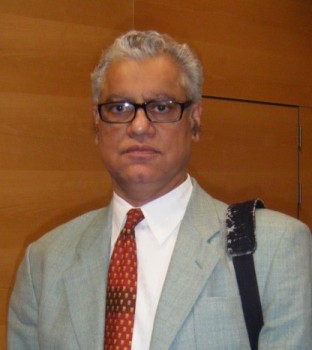(c) The Australian
November 27, 2010.
- By Stephen Lunn, Social affairs writer
An energetic case has been put for the country to regulate and tax the production of cannabis
A GLOBAL leader on innovative drugs policy in the 1980s, Australia has been stuck in a conservative rut since, at great cost to drug users and the broader community, a high-profile US drugs policy expert warns.
And in 2010, when Australia should be contemplating the regulation and taxation of cannabis and getting safe pharmaceutical heroin in the hands of addicts, it continues to prohibit drug use to demonstrably little effect, says Ethan Nadelmann, executive director of the New York-based Drug Policy Alliance.
Nadelmann says countries that boldly declare “zero tolerance” or “a war on drugs” are deluding themselves that they can prevail over the global drug trade. Illicit drugs are cheaper and more plentiful than ever, he says.
“You really led the world when it came to implementing sensible harm-reduction policies that reduced the spread of HIV among injecting drug users,” he tells Inquirer.
“You kept your rates of HIV among injecting drug users to less than 2 per cent, whereas in America we let it explode to 40 or 50 per cent. If America had implemented the harm reduction policies in the 80s and 90s that Australia did, we’d have quarter of a million people alive today as a result.”
Nadelmann says drug policy reform in Australia then became “bogged down in politics” as European countries moved away from failing prohibitionist approaches.
His clarion call is to regulate and tax cannabis production, sale and use rather than ban it with the threat of criminal sanction.
The 2007 National Drug Strategy Household survey found more than 1.5 million Australians used cannabis in the previous year, and more than 600,000 in the previous week, evidence that prohibition is not making it more difficult to source drugs.
Nadelmann says most cannabis users aren’t addicts, or even regular imbibers, but admits the drug has adverse health consequences, with links to mental illness and schizophrenia, and poor educational outcomes for young users. The social costs of illicit drug use in Australia, including crime, health outcomes, lost productivity and road accidents, was put at $6.4 billion annually by economists David Collins and Helen Lapsley in 2008. Which is why government funds would be better spent on treatment programs for those with drug problems rather than law enforcement, he says.
The most recent data published by the Australian Bureau of Criminal Intelligence shows nearly 64,000 drug consumer arrests were made in 2007-08, and estimates of annual law enforcement costs run at between $1.3bn and $2bn.
“Marijuana arrests are the majority of all drug arrests in this country,” Nadelmann says. “It still gives people criminal records. You seem to have run out of steam when it comes to new ideas about changing this around.
“Regulating and taxing cannabis is not risk free but it’s a better approach than prohibition.”
Nadelmann visited Canberra during the week and met MPs including Malcolm Turnbull, Mal Washer and Rob Oakeshott. He says there’s an “emerging coalition” of politicians who are privately or overtly open to his case.
But one not for the turning is Bronwyn Bishop, who chaired a 2007 parliamentary inquiry into the effect of illicit drug use on families. Bishop says the public “just [doesn't] want illicit drugs legalised”. “The argument of the harm-minimisation lobby is stupid,” she says. “They say the war on drugs is failing, so it should be legalised. Would we do this with other crimes that harm people?
“The Australian public [is] smart enough to know that the more drugs are available, the more available they will be to their kids.”
She questions the way harm-minimisation proponents downplay the health effects of drugs such as cannabis.
“It’s a very damaging drug and it’s a known precursor to using other drugs,” she says.
“The public wants illicit drugs to stay that way and it’s only a few who seem to be agitating for this change that doesn’t have public support.”
Perth addiction specialist George O’Neil, who is trialling a naltrexone-implant to stop heroin addiction, is similarly unimpressed with the harm-minimisation message. “It’s disgraceful propaganda. There’s not a single mother in Australia [who] will swallow the story that’s being sold,” he says. “If an 18-year-old is using cannabis, mothers don’t want him to be given easy access to cannabis so he won’t have to commit crimes to get it. They want him not to use it.”
Undeterred, Nadelmann cites with approval the approach to drug use taken in Portugal as one that would be appropriate for his home country and Australia.
In 2001 Portugal decriminalised the possession of up to a 10-day supply of all types of illicit drugs. Those found in possession are referred to a regional committee that decides whether the person needs treatment. If no treatment is required, the possessor can be sanctioned with driving restrictions, bans from entertainment areas or fines.
Nadelmann also argues the case for more heroin injecting facilities and access for addicts to safe drugs. He says there is no medical argument that can be mounted against his case for regulation over prohibition, and the only objections are political.


